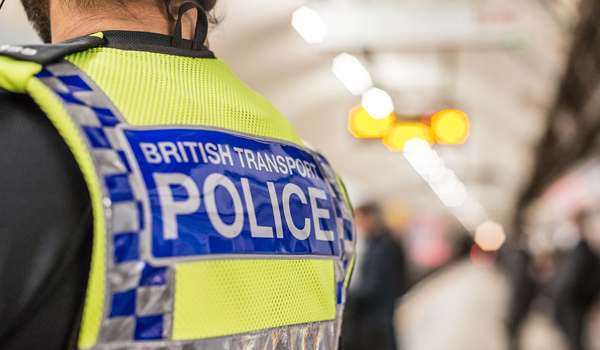BTP to trial use of live facial recognition at stations
British Transport Police (BTP) is to begin trialling the use of live facial recognition (LFR) technology at railway stations.
The pilot is scheduled to start in the coming weeks and run for six months at selected key transport hubs in London. It will evaluate the effectiveness of LFR on the railways, its impact on public safety, and the public’s response to the technology.
BTP said it will inform members of the public about the deployments online and via social media before they happen.
“Our deployments will be intelligence-led, meaning we’ll target the technology to crime hotspots on the network where data shows us there is a likelihood of high harm offenders passing through the location,” BTP said. “The introduction does not relate to the major incident at Huntingdon earlier this month.”
The initiative follows “a significant amount of research and planning”, and forms part of BTP’s commitment to using innovative technology to identify and apprehend individuals wanted for serious criminal offences.
While roadside LFR deployments are already in use by other forces, such as the Metropolitan Police Service and South Wales Police, BTP said policing the railways represents a “unique challenge, with a transient population and over three million journeys taken a day across Great Britain”.
It added: “Our deployments will be intelligence led, where we know we need the resources most, and see cameras temporarily in place on station concourses. There will be highly visible signage in place to inform the public about the operation, as well as QR codes available for feedback and further information.
“It will work in the same way as people are already familiar with – the cameras capture live footage of people passing by and compare their faces against an intelligence-led database of wanted offenders.
“If there’s a match, the system generates an alert. An officer will review it and carry out further checks to determine if the person is a suspect. They’ll use their discretion to determine whether an arrest is necessary.”
BTP said the process will follow “all applicable legal requirements”. People who prefer not to enter the recognition zone will have alternative routes available and images of anyone not on the authorised database will be deleted immediately and permanently.
Chief Superintendent Chris Casey, BTP’s senior officer overseeing the project, said: “As the police force responsible for protecting the railways in England, Scotland and Wales, we take our commitment to keeping the travelling public safe incredibly seriously. We want them to know that as well as actively patrolling and investigating, we’re investing in technology that is going to make them safer too.
“We’ve seen great results from our policing partners when deploying LFR, and we’re confident that our use of the technology will enable us to achieve similar results.
“I can assure anyone concerned about their privacy that we’re absolutely committed to using LFR ethically and in line with privacy safeguards. Deployments will comply with all relevant legal and regulatory standards, and oversight will include internal governance and external engagement with ethics and independent advisory groups.
“When the pilot is complete, we’ll conduct a full assessment to review outcomes, identify lessons learned, and inform future planning. I encourage anyone who encounters our use of LFR when the trial begins to engage with us so we can make sure that we’re using it in the best way and helping to make our railways as safe as possible.”


